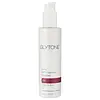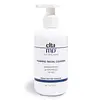What's inside
What's inside
 Key Ingredients
Key Ingredients

 Benefits
Benefits

 Concerns
Concerns

 Ingredients Side-by-side
Ingredients Side-by-side

Salicylic Acid 0.5%
MaskingWater
Skin ConditioningMethyl Perfluoroisobutyl Ether
SolventButylene Glycol
HumectantMethyl Perfluorobutyl Ether
SolventSorbitol
HumectantCocamidopropyl Betaine
CleansingSodium Laureth Sulfate
CleansingChondrus Crispus
MaskingCyclopentasiloxane
EmollientCyclohexasiloxane
EmollientCocamide DEA
EmulsifyingPolyhydroxystearic Acid
EmulsifyingIsononyl Isononanoate
EmollientPhenoxyethanol
PreservativeEthylhexyl Isononanoate
EmollientMethylparaben
PreservativeSodium Cocamidopropyl Pg-Dimonium Chloride Phosphate
CleansingXanthan Gum
EmulsifyingSodium Hydroxide
BufferingImidazolidinyl Urea
PreservativeTetrasodium EDTA
Ethylparaben
PreservativeButylparaben
MaskingCinnamomum Zeylanicum Bark Extract
AntimicrobialPropylparaben
PreservativeIsobutylparaben
AntimicrobialYeast Polysaccharides
Skin ConditioningOryza Sativa Bran Extract
Skin ConditioningMethylchloroisothiazolinone
PreservativeMethylisothiazolinone
PreservativeBlue 1 Lake
Cosmetic ColorantSalicylic Acid 0.5%, Water, Methyl Perfluoroisobutyl Ether, Butylene Glycol, Methyl Perfluorobutyl Ether, Sorbitol, Cocamidopropyl Betaine, Sodium Laureth Sulfate, Chondrus Crispus, Cyclopentasiloxane, Cyclohexasiloxane, Cocamide DEA, Polyhydroxystearic Acid, Isononyl Isononanoate, Phenoxyethanol, Ethylhexyl Isononanoate, Methylparaben, Sodium Cocamidopropyl Pg-Dimonium Chloride Phosphate, Xanthan Gum, Sodium Hydroxide, Imidazolidinyl Urea, Tetrasodium EDTA, Ethylparaben, Butylparaben, Cinnamomum Zeylanicum Bark Extract, Propylparaben, Isobutylparaben, Yeast Polysaccharides, Oryza Sativa Bran Extract, Methylchloroisothiazolinone, Methylisothiazolinone, Blue 1 Lake
Water
Skin ConditioningSodium Cocoyl Glycinate
CleansingAcrylates Copolymer
Methyl Perfluoroisobutyl Ether
SolventMethyl Perfluorobutyl Ether
SolventMagnesium Silicate
AbsorbentSodium Cocoyl Apple Amino Acids
Skin ConditioningBromelain
Skin ConditioningPEG/PPG-14/4 Dimethicone
EmulsifyingPolyhydroxystearic Acid
EmulsifyingIsononyl Isononanoate
EmollientEthylhexyl Isononanoate
EmollientSodium Cocamidopropyl Pg-Dimonium Chloride Phosphate
CleansingPhenoxyethanol
PreservativeSodium Hydroxide
BufferingCapryloyl Glycine
CleansingUndecylenoyl Glycine
CleansingSodium Bisulfite
AntioxidantPropylene Glycol
HumectantMaltodextrin
AbsorbentCoconut Acid
CleansingSodium Chloride
MaskingHexylene Glycol
EmulsifyingTetrasodium Glutamate Diacetate
Parfum
MaskingWater, Sodium Cocoyl Glycinate, Acrylates Copolymer, Methyl Perfluoroisobutyl Ether, Methyl Perfluorobutyl Ether, Magnesium Silicate, Sodium Cocoyl Apple Amino Acids, Bromelain, PEG/PPG-14/4 Dimethicone, Polyhydroxystearic Acid, Isononyl Isononanoate, Ethylhexyl Isononanoate, Sodium Cocamidopropyl Pg-Dimonium Chloride Phosphate, Phenoxyethanol, Sodium Hydroxide, Capryloyl Glycine, Undecylenoyl Glycine, Sodium Bisulfite, Propylene Glycol, Maltodextrin, Coconut Acid, Sodium Chloride, Hexylene Glycol, Tetrasodium Glutamate Diacetate, Parfum
 Reviews
Reviews

Ingredients Explained
These ingredients are found in both products.
Ingredients higher up in an ingredient list are typically present in a larger amount.
We don't have a description for Ethylhexyl Isononanoate yet.
Isononyl Isononanoate is a synthetic skin-conditioner and texture enhancer. It is created from nonanoic acid, a fatty acid found in cocoa and lavender oil.
As an emollient, Isononyl Isononanoate helps keep your skin soft and smooth. This is because emollients create a barrier on the skin to trap moisture in.
Isononyl Isononanoate helps give products a velvet feel and improves spreadability.
Learn more about Isononyl IsononanoateWe don't have a description for Methyl Perfluorobutyl Ether yet.
We don't have a description for Methyl Perfluoroisobutyl Ether yet.
Phenoxyethanol is a preservative that has germicide, antimicrobial, and aromatic properties. Studies show that phenoxyethanol can prevent microbial growth. By itself, it has a scent that is similar to that of a rose.
It's often used in formulations along with Caprylyl Glycol to preserve the shelf life of products.
Polyhydroxystearic Acid is a soft wax made from castor oil.
It is is a texture thickener, emulsifier, and film-former. Emulsifiers prevent ingredients from separating, such as oils and waters.
Polyhydroxystearic Acid may not be fungal acne safe.
Learn more about Polyhydroxystearic AcidWe don't have a description for Sodium Cocamidopropyl Pg-Dimonium Chloride Phosphate yet.
Sodium Hydroxide is also known as lye or caustic soda. It is used to adjust the pH of products; many ingredients require a specific pH to be effective.
In small amounts, sodium hydroxide is considered safe to use. However, large amounts may cause chemical burns due to its high alkaline.
Your skin has a natural pH and acid mantle. This acid mantle helps prevent harmful bacteria from breaking through. The acid mantle also helps keep your skin hydrated.
"Alkaline" refers to a high pH level. A low pH level would be considered acidic.
Learn more about Sodium HydroxideWater. It's the most common cosmetic ingredient of all. You'll usually see it at the top of ingredient lists, meaning that it makes up the largest part of the product.
So why is it so popular? Water most often acts as a solvent - this means that it helps dissolve other ingredients into the formulation.
You'll also recognize water as that liquid we all need to stay alive. If you see this, drink a glass of water. Stay hydrated!
Learn more about Water